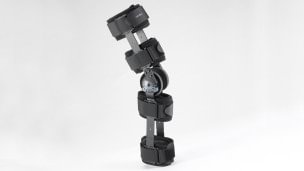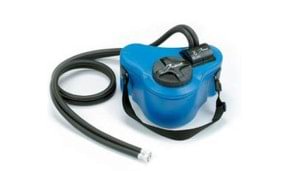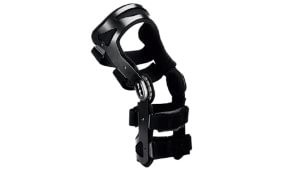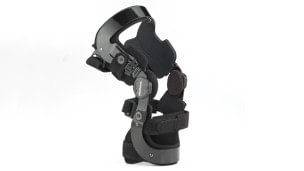Treating your knee pain
The most important goal of your treatment — whether it’s pre-surgery, post-surgery, or simply using a brace — is to help you attain the most function and mobility possible, so you can lead an active life.
About knee repairKnee repair for ACL, meniscus, and ligament damage is becoming more and more common. Here’s where you can become more familiar with your post-surgery rehabilitation options. Your health care team (which includes your doctors, therapists, and your loved ones) are working to make sure you regain as much mobility as possible. There are several rehabilitation devices that can help your post-surgical recovery. Take a look at the alternatives. And remember that your health care team will always be the best resource to help decide your course of action, since they are able to evaluate your individual situation. | ||
 | Post-op bracePost-operative braces are used in traumatic situations (accidents) as well as post-operatively in order to immobilize and stabilize your knee, either at a set position or allowing limited knee joint motion. Using a post-operative brace allows gradual buildup of movement when your therapist sets flexion and extension limits at various degrees. | |
 | CryotherapyCold decreases pain by reducing the ability of the nerve endings to conduct impulses and limits your muscles’ ability to contract, thus reducing muscle spasms that can occur as your knee heals. Devices that use cold therapy (or “cryotherapy”) were developed to reduce pain and soft tissue swelling for people recovering from surgery or trauma to a particular joint, such as the knee. Today’s cryotherapy devices have sophisticated temperature controls, so there is little risk of nerve damage or frostbite from uncontrolled cold. | |
 | ACL BracesThese knee braces are designed to help you after sustaining damage to your ACL (anterior cruciate ligament), meniscus, and other types of ligaments. The brace provides pain relief, reduces edema (swelling) and improves knee joint function. Sometimes they are prescribed after surgery as a means of rehabilitation; sometimes they can be an alternative to surgery. They can be used to stabilize your ligament/s, either during sports activities or simply when walking. | |
Xeleton brochure | download xeleton-brochure.pdf | 0.69 MB | |
Braces and supports mini catalog | download braces-and-supports-mini-catalog.pdf | 9.21 MB | |
Treating your chronic knee pain (osteoarthritis)Osteoarthritis (OA) can be challenging to treat for many reasons, especially if you have difficulty tolerating corrective force or are overweight. If you are diagnosed with mild to moderate medial or lateral osteoarthritis, or have OA combined with ligament instability, you may benefit from using a specialized knee brace. Depending on your diagnosis, this may help delay surgery. Remember that your health care team will always be the best resource to help decide your course of action, since they are able to evaluate your individual situation. | ||
 | Arthritis knee braceA knee brace specifically designed to treat osteoarthritis utilizes a rigid frame and hinging to help stabilize your knee and ultimately provide relief. It can also delay more aggressive treatment. | |
OA Restore knee brace brochure | download oa-restore-knee-brace.pdf | 0.48 MB | |
After knee replacement surgeryYour physician may recommend knee replacement surgery if you have a stiff, painful knee that makes it difficult to perform even the simplest of activities. It is usually a step taken after other treatments are no longer working. People over the age of 50 with severe osteoarthritis are the usual candidates for this type of surgery. There are several options post-surgery that will help in your rehabilitation and recovery. Remember that your health care team will always be the best resource to help decide your course of action, since they are able to evaluate your individual situation. | ||
 | Post-op bracePost-operative braces are used in traumatic situations (accidents) as well as post-operatively in order to immobilize and stabilize your knee, either at a set position or allowing limited knee joint motion. Using a post-operative brace allows gradual buildup of movement when your therapist sets flexion and extension limits at various degrees. | |
 | Arthritis knee braceA knee brace designed to treat osteoarthritis utilizes a rigid frame and hinging to help stabilize your knee and ultimately provide relief. While it can delay more aggressive treatment, it is also very useful as a post-operative therapeutic brace following knee replacement surgery. | |
Braces and supports mini catalog | download braces-and-supports-mini-catalog.pdf | 9.21 MB | |
Xeleton brochure | download xeleton-brochure.pdf | 0.69 MB | |
OA Restore knee brace brochure | download oa-restore-knee-brace.pdf | 0.48 MB | |